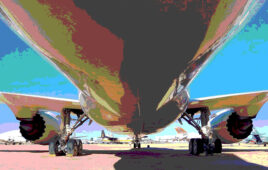Last spring (2011) private industry successfully sent a spacecraft carrying
cargo to the International Space Station. Now the race is on to see which
company will be the first to make commercial human spaceflight a reality.
Sierra Nevada Corporation (SNC) is one of three companies that will receive
hundreds of millions of dollars to further develop its commercial human spacecraft
system, NASA announced earlier this month (August, 2012).
SNC has turned to Georgia Institute of Technology (Georgia Tech) for
expertise on how to ensure the smoothest possible re-entry for its spacecraft,
the Dream Chaser, which is reminiscent of NASA’s space shuttle.
Robert Braun, Georgia Tech professor of space technology, and his research
team—Research Engineer Jennifer Kelly and engineering graduate students Zach
Putnam and Mike Grant—are working with SNC on the design of an advanced
guidance algorithm that will make the most of the Dream Chaser’s superior
aerodynamic performance during re-entry and landing.
Of the three companies selected by NASA to develop spaceships to taxi
astronauts to and from the International Space Station, Sierra Nevada
Corporation is the only one with a winged vehicle. It is designed to launch
vertically and land on a runway, similar to the Space Shuttle. Boeing and
SpaceX are developing capsules that would land in a body of water.
Because the Dream Chaser is similar to the Space Shuttle, it could land
using the same guidance algorithm the shuttle used. However, that algorithm,
like the shuttle, is based on technology that is more than 40 years old; it
does not take advantage of the onboard computing available for today’s space
systems.
“The shuttle was built in the 1970s, and its designers didn’t have the
onboard computing capabilities we have today,” Braun says. “The Dream Chaser
can capitalize on an advanced entry guidance algorithm matched to its
aerodynamic and onboard computing capability.”
Braun and his team took the Dream Chaser’s aerodynamic configuration,
control surfaces, and mass properties into account when developing the
algorithm. To date, the algorithm runs a computer simulation that allows SNC
engineers to tweak aspects of the spacecraft design based on scenarios such as
variable atmospheric conditions to perfect the landing process.
The result is an algorithm that “allows the vehicle to fly how it was meant
to fly,” Putnam says.
Georgia Tech engineers delivered an early prototype of the software to the
SNC team this month for detailed evaluation and testing.
Zachary Krevor, a Georgia Tech graduate who is SNC’s principal systems
engineer with the flight dynamic and performance group, was eager to see the
results.
“This is important for us because we feel the algorithm could have
performance benefits for our vehicle and make it robust to atmospheric
disturbances while ensuring we have a ‘low g’ re-entry,” he says. “Capsules do
not have the ‘low g’ re-entry that is so important for both astronauts and sensitive
science payloads.”
For the students, the project provides real-world experience in the nascent
commercial space industry.
“To be able to participate in the new era of commercial flight is very
exciting,” Grant says. “It has been a great learning experience to see how
commercial space companies work and a real thrill to contribute in a meaningful
way to the potential flight of this new space flight system.”
Sierra Nevada Corporation’s Dream Chaser received an award of $212.5 million
from NASA’s Commercial Crew Integrated Capability Program on August 3, 2012,
that will allow the company to complete development of the system and transport
crews to space as early as 2016. An approach and landing test for the Dream
Chaser is scheduled for later this year.
Source: Georgia Institute of Technology




